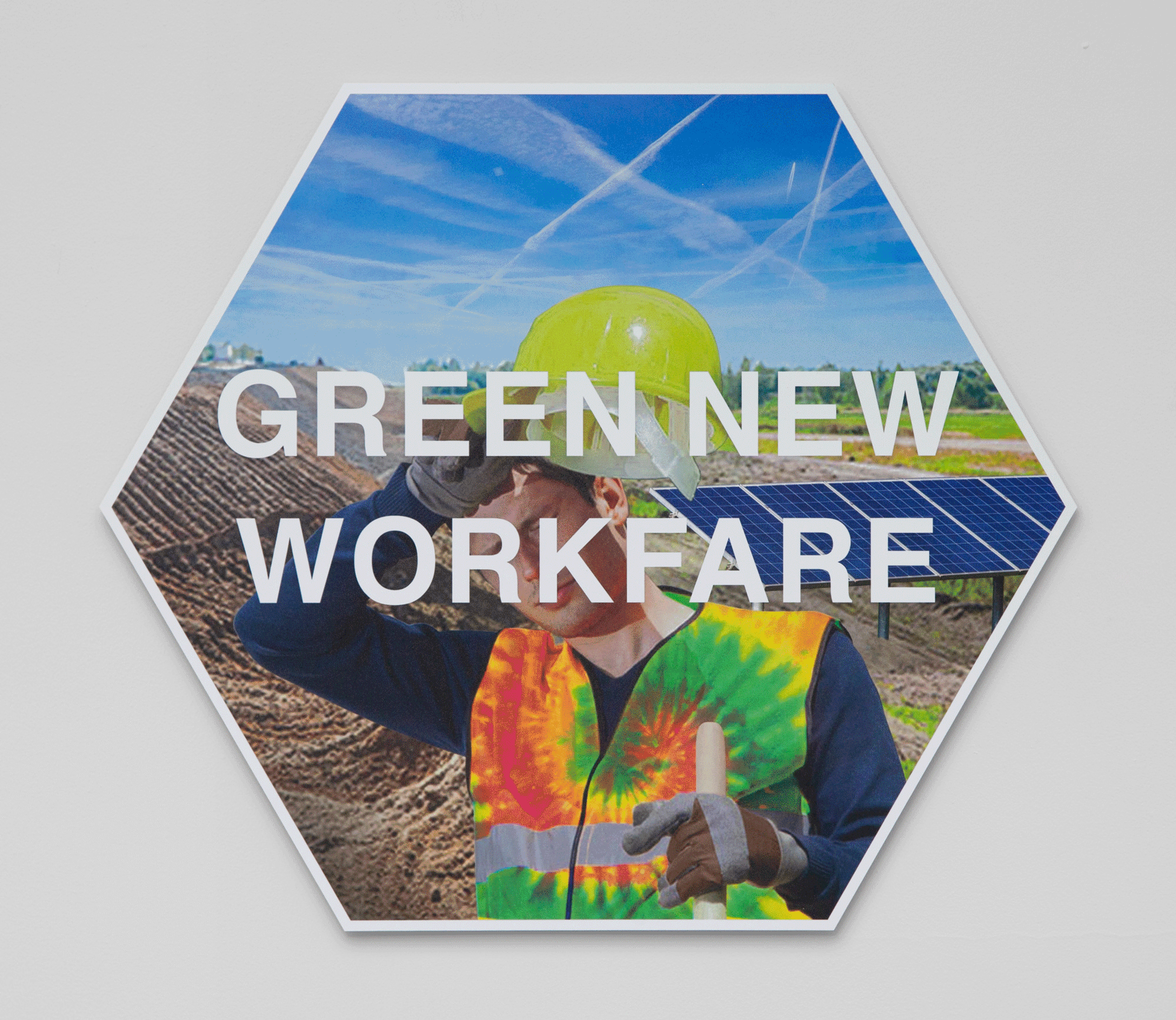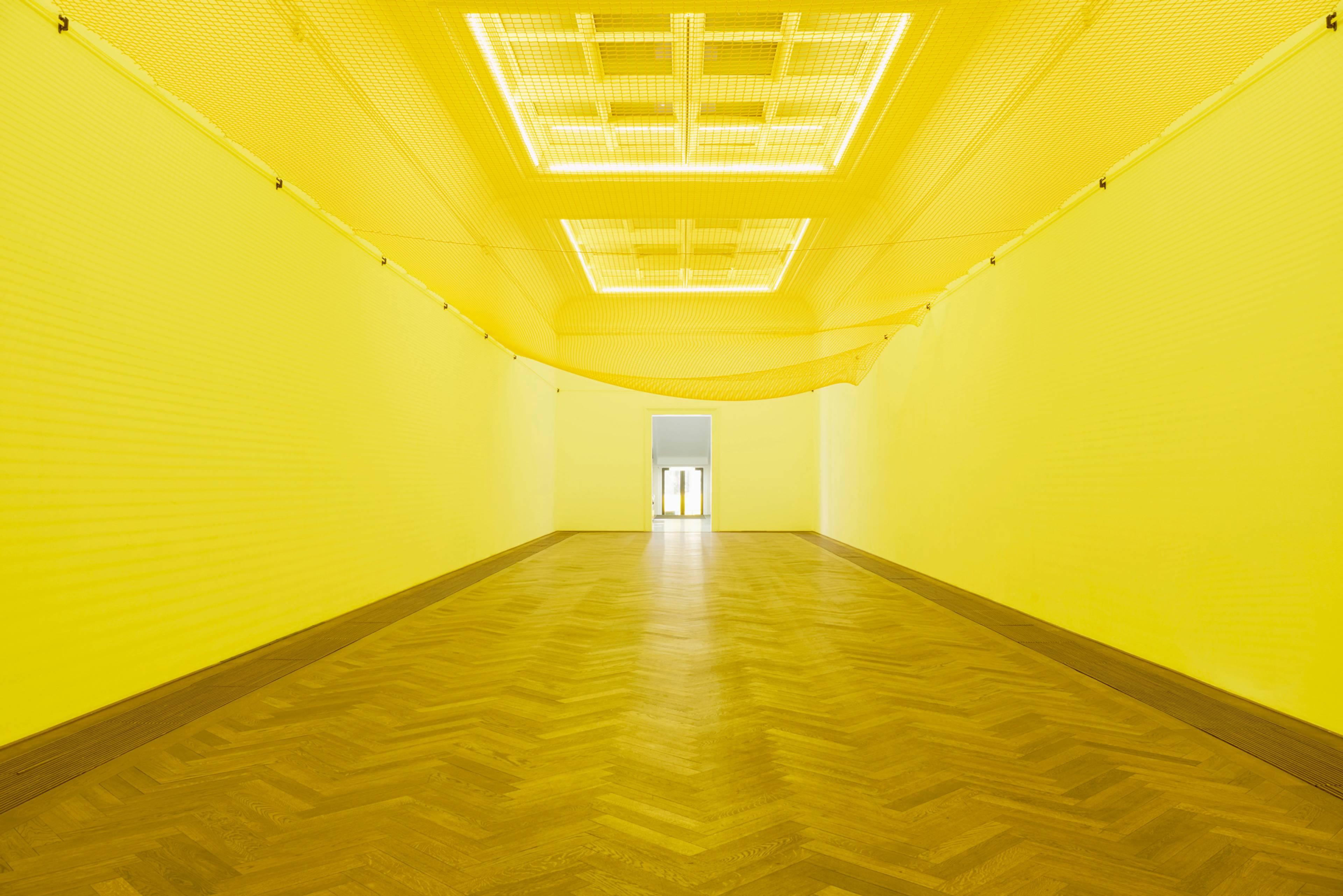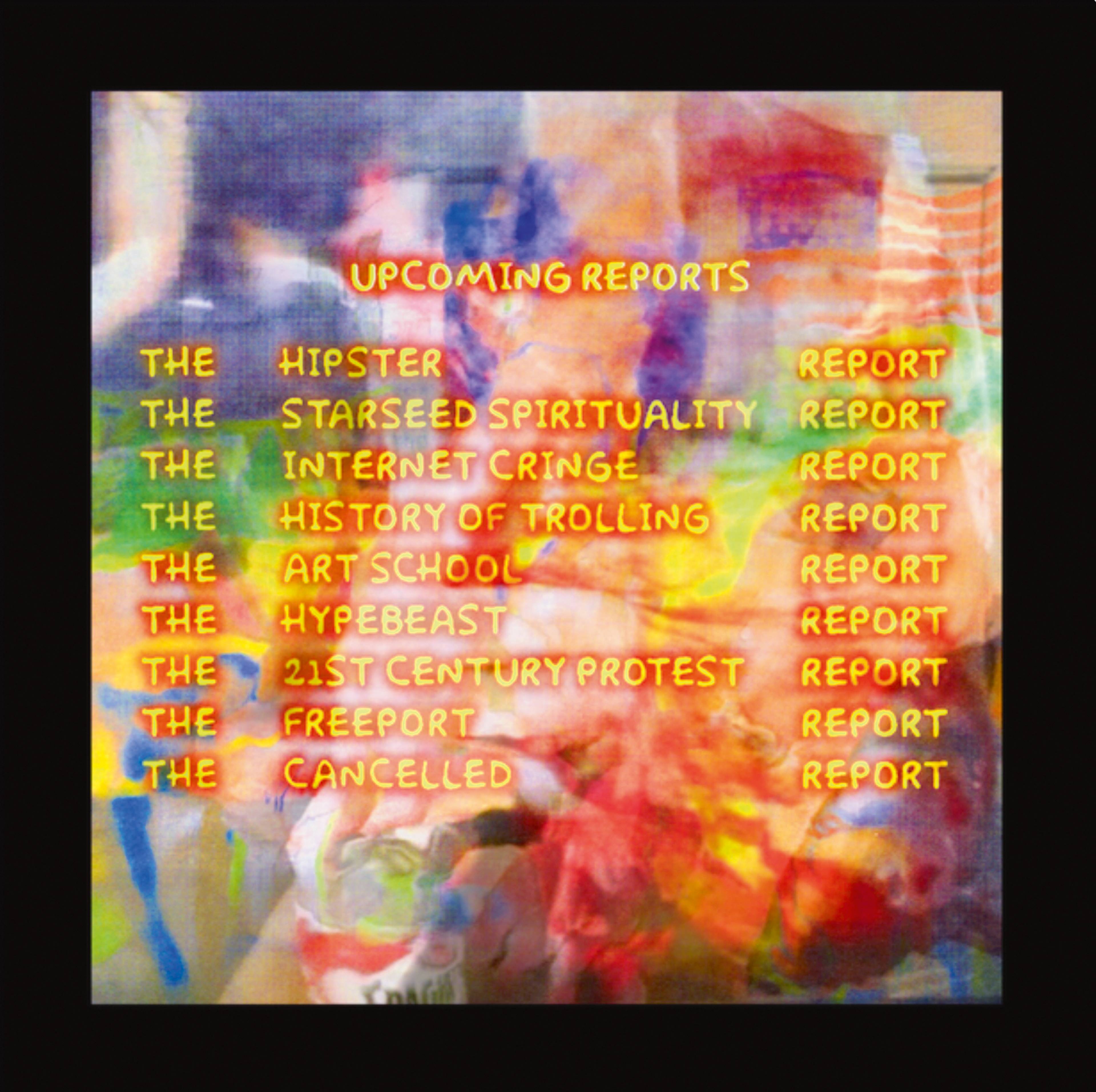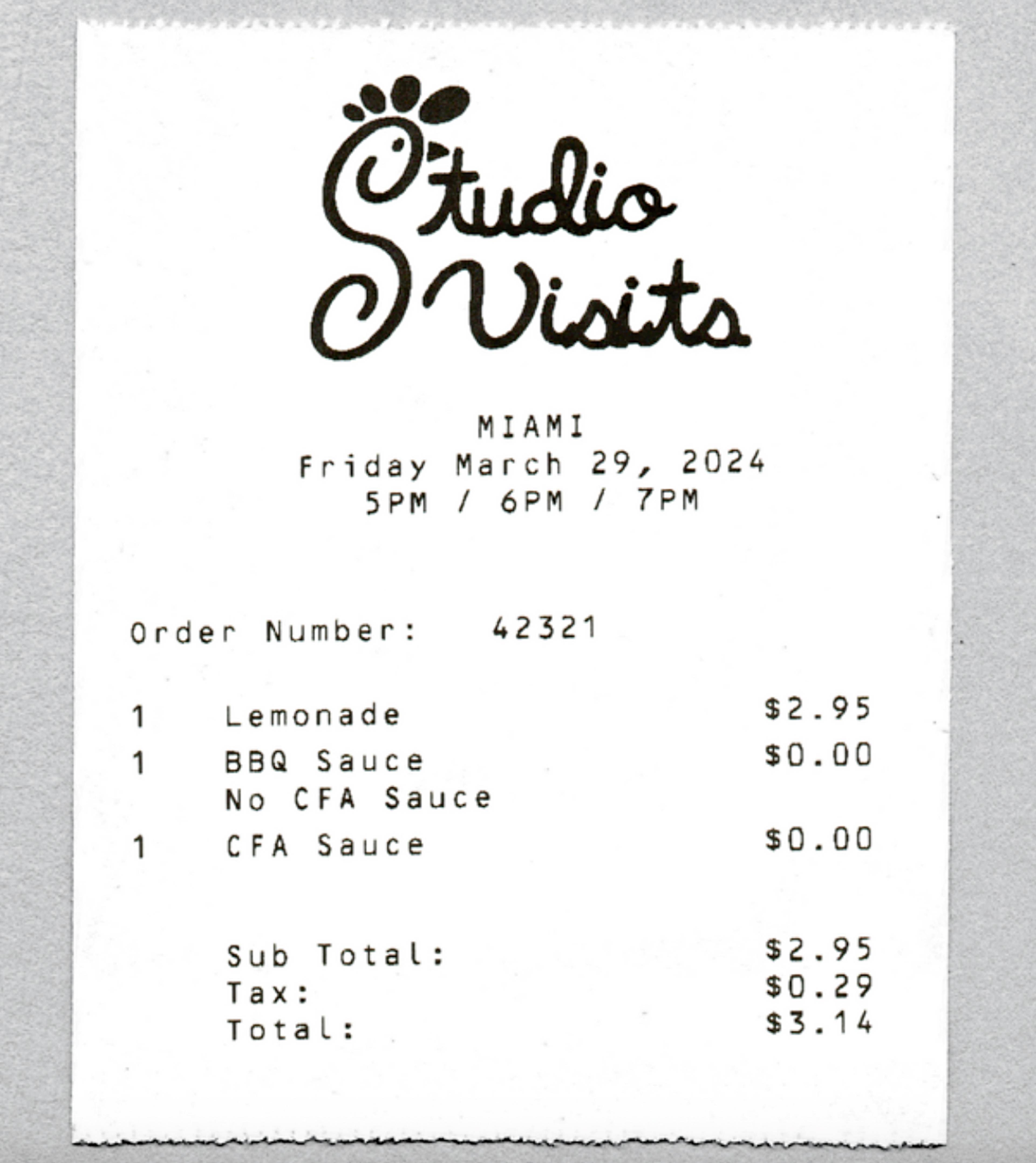One of the most prominent artworks in the 2024 Whitney Biennial, “Even Better Than the Real Thing,” was an electrified net by British artist P. Staff (Afferent Nerves, 2023), stretched across a small gallery a few meters above the floor. Here was risk – the intimation of danger, the big black box with buttons and lights buzzing on the wall, the faint crackle of the livestock-deterring strip around the room’s perimeter. The net, though, is plastic, which is to say non-conductive – inert. Maybe this faux danger is “better than the real thing” (a phrase the curators suggest counters attacks on trans people like Staff), although my sense is that an actual electric net would violate fire codes and other bans on imperiling museum patrons.
Several critics dinged this Biennial for being risk-averse. (Hedging, I called it “mostly riskless.”) The counterargument is that what counts as risk depends on who you are, and in what context. It’s risky for some people to exist, artistically or bodily. Certainly, the normal world is chaotic, hateful, shitty – do we need art to disrupt what little comfort normalcy allows us? This careful atmosphere speaks to a need. Terence Trouillot put it well in Frieze: “Considering the insidious brand of McCarthyism that seems to plague cultural institutions all across the world at the moment, playing it relatively safe may be the only option for survival.”
What’s up with risk in the first place? The historic avant-garde emphasized the puckish role of the artist concerning polite society: to improve humanity’s general lot through scandal and provocation. To this day, marquee exhibitions like the Whitney Biennial fish for attention by overpromising to challenge, provoke, unsettle, etc. The 2024 Biennial press release picks up participating artist Ligia Lewis’s memorable description of a “dissonant chorus” and proffers “a provocative yet intimate experience of distinct and disparate voices that collectively probe the cracks and fissures of the unfolding moment.” Dissonance? Provocation? Probed cracks and fissures? Sounds uncomfortable. But even the Biennial’s defenders found its radicality mostly in its refusal to be confrontational, argumentative, provocative. Picking intellectual fights, and feeling virtuous about it, comes across as tiresome and tone-deaf – a vestige of straight white patriarchy and its macabre trail of dead authors and ended histories. Who cares? The average contemporary art viewer? The plastic net was electrified, or maybe it wasn’t; so what if it had been shown the year before in Basel; it was a concise, self-satisfied artwork regardless.
Is art going in circles? Is it looking backwards? Definitely. These maneuvers are tactical. This is contemporary art as refuge.
The “quiet biennial” is part of a larger trend in risk management and self-care in contemporary art. The 2022 Biennial, conceived before Covid and launched two years into the pandemic, was titled, portentously, “Quiet As It’s Kept”; the curators wrote that, “Rather than offering a unified theme, we pursue a series of hunches.” You can see it in the 2024 Venice Biennale, too – titled “Foreigners Everywhere” – or in this year’s Jenny Holzer retrospective “Light Line” at the Guggenheim in New York. Art institutions can’t shake the imperative to provide social impact and progressivism, yet they also try to duck the potentially catastrophic controversies that have defined their predecessors. The banner noncommercial art events of the 2020s have taken a defensive crouch.
The problem might be the rhetoric. As Marina Abramović told sociologist Sarah Thornton, circa 2015: “Artists are here to risk, to find new territory. Risk, especially when you are a known artist, involves failing.” Most artists, though, need a break from all the risking and failing. Curator Nicolas Bourriaud, writing in Spike, sees the latest Venice Biennale as evidence “that contemporary art has become a global but compartmentalized safe space, designed to preserve the world as it was, rather than a place for inventing what the world might become.” But we have plenty of models of what the world might become. Many of them are horrifying. Newly stoked, the acute desire for a racially, sexually, economically just, late-colonial West has met a smothering, reactionary smog. Art feels dim, an inadequate guiding light.
P. Staff, Afferent Nerves, 2023. Installation view, “In Ekstase,” Kunsthalle Basel, 2023. Photo: Philipp Hänger / Kunsthalle Basel
You can also sense the apparent vacuum of animated discourse about aesthetics – what you could call a lack of an avant-garde, although metaphors of conquest feel inappropriate here. Nuanced conversations are happening, of course – but “underground,” offline, or in private forums like Discords and group chats. (To paraphrase critic Caroline Busta, you won’t find counterculture on Instagram.) These nonpublic networks are what tech blogger Venkatesh Rao calls the “cozyweb.” It’s a refuge from the “dark forest” of the open internet, a corporate superfund site stalked by bots, trolls, censors, hackers, scammers, aggregators, and advertisers. Why is the forest silent at night? Not because it’s empty – but because there are predators. The platform still known as Twitter used to fuel a kind of discourse, but lately, it’s gotten risky to really spill your guts where your hot-headed or empty-headed bons mots get stamped into the public record for eternity (much like Holzer’s laughable series of Trump tweets stamped into chunks of lead) and can lead to physical threats
Is art going in circles? Is it looking backwards? Definitely. These maneuvers are tactical. This is contemporary art as refuge. Tapped to entertain in art’s castles, artists and curators find it more strategic to retell old stories, reprise old work, rehash old battles, and pine for old peace. Contemporary art is cozy art in a dark forest. The fire is in the hearth.
The tenor is medieval for a reason. The sense of disempowerment is real, the inequality of gig work and adjunct teaching evokes feudalism. Designers depend on subscription software as the Adobe suite like serfs with no choice but to farm land they’ll never own. Art students receive expensive educations from professors who are rehired at the last possible moment before each semester, in hopes of competing for those same tenuous jobs. Artists, despite years of advocacy, can’t afford to refuse prominent platforms that “pay” in visibility. The list goes on. The institution won’t save you. No wonder a significant handful of artists (Andrew Norman Wilson and Martine Syms come to mind) have pivoted to full-length film-making and have agents.
No risk! We’re afraid of losing what we’ve gained – and part of that is losing the idea that there might be a “we” in the first place.
One upshot is that artists are building their own institutions. (Even if they’re quickly realizing how difficult that is to do sustainably and ethically.) Art schools feel increasingly like bottom-heavy pyramid schemes (as the net-artist-turned-video-essayist Brad Troemel underscores on his Patreon), or leave students feeling unprepared to survive in the real world, and the reaction has been a flush of coaching programs, online members-only clubs, artist consultancies, and independent “schools” that promise various alternatives and supplements to traditional art education. The artist Josh Citarella’s recent career arc: Scuttling his gigs as an adjunct professor, he posted his syllabi online and started a Discord, which grew into the very-online community and publishing platform Do Not Research. The cottage industry of millennial survival tips has its art-world specialists.
And traditional institutions? When they’re not embracing populism to drive sales, art institutions seem to be having increasingly siloed conversations. Major shows seem at pains not to tell us anything new. Call it cozy curating. They keep up the ruse that we need XYZ “now more than ever.” Of the many groan-inducing moments in Holzer’s current retrospective at the Guggenheim are her attempts to make junk sculpture of images of Trump’s tweets (proving … what? that many of them sound hateful or nonsensical?) by immortalizing them in scraps of metal. See? That’s why it’s dangerous to tweet! (The heel-nipping critiques in this essay, meanwhile, are why it’s dangerous to have New York retrospectives.) But don’t blame the artists. Cheesy political art is another symptom of the mindset for which art should be provocative and fulfill a certain truth-to-power role, but that also struggles with its impotence. Art can’t stop Trump, nor the rise of other antidemocratic populists, nor the wars in Ukraine and Gaza. But it can offend collectors and philanthropists. (In fact, in this analogy, the Guggenheim is something like Instagram. Exit through the gift shop!)
Citarella and Rao are both part of the Dark Forest Collective. The Dark Forest theory explains the way artists are behaving in the shadow of disappointing institutions. Loyalty to the institution, to “the brand,” seems naïve, absent tenure, a staff writing job, or gallery representation. And when you’re handed the keys to a major biennial or a legacy art publication, why not hold the door open for all your friends, too? You probably won’t be there long anyway. It’s the trick Fred Moten and Stefano Harney describe in The Undercommons: Fugitive Planning & Black Study (2013): refusing what has been refused to you. (And, in many ways, the “dark forest” theory is just very-online people of relative privilege arriving where Moten and Saidiya Hartman were a decade ago.) The old institutions will crumble under their own weight, or they won’t, but the point is that you don’t have to worry about that.
Brad Troemel, “upcoming reports!,” 1 February 2024, Patreon (screenshot)
Brad Troemel, “IRL studio visits in Miami,” 28 March 2024, Patreon (screenshot)
No risk! We’re afraid of losing what we’ve gained – and part of that is losing the idea that there might be a “we” in the first place. We’re afraid of alienating friends, being cast out of community. These coalitions have been hard-won, tempered into a fragmenting Venn diagram of “us”-based solidarities by the us-vs-them mentality of the culture wars. But, ok. Not everyone agrees. One frustration with “Foreigners Everywhere” seems to be that coining such a sweeping “otherness,” and applying it to the living and the dead, saps the power of protected categories that so much political gain has depended on. But was Art ever an effective political bloc? As Boris Groys wrote back in 2017: “Even if art museums proudly remain in the centers of contemporary cities, the artistic community is, politically speaking, a minority inside every particular national culture. So it is not surprising that artists feel solidarity with segments of the population that are socially, economically, and politically underrepresented, such that art becomes one of the venues for expressing their grievances and aspirations …”
Part of the weirdness of this moment is that, for any given project, the scale of the institution doesn’t always correspond to the size of its audience. This is a necessary departure from universal narratives. It also means that you’re often presented with work that isn’t addressing you directly, or that an institution goes out of its way to explain why this work is important when, maybe, broadly speaking, it isn’t. Institutions are set up to be definitive. But the long tail of culture keeps wagging. If you don’t know who a show or magazine is speaking to, maybe it’s not for you; please select another. That presents an economic challenge for institutions, and creates the odd spectacle of cozily curated big-budget group shows piping up in the dark forest, with ads in the subway and coverage in international press. If you don’t understand what’s going on there, that might be by design.
There’s a problem, though. The art world is also a dark forest all its own, inside an even darker one. Its safe spaces are provisional, its cliques furtive. It’s almost as if the previous generation of “relational aesthetics” artists (pace Bourriaud), with their woozy “temporary autonomous zones,” weren’t naïve utopians so much as hard-bitten realpolitikers. Free food! Colorful lights! No risk there, and no urgency, either. If contemporary art since 9/11 has had a social purpose – its revolutionary sales pitches aside – it’s been to define ever more granular clubs of self-interest. In a way, this is how art museums and magazines have always functioned. The modernist project tried to universalize art, and political tensions periodically drive people to insist on firm, irreconcilable positions. It can feel like community itself is at risk. But there isn’t a monolithic art community so much as communities – interlocking, overlapping, and disagreeing. Offer a bright, warm idea, and someone will show up.
___
This text was originally published in print in Spike #80 – The State of the Arts under the title “Cozy Art in Dark Forests.” You can buy your copy in our online shop.





